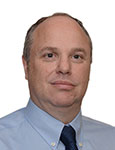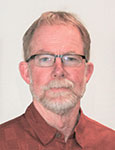Test and Inspection
 The target style of the x-ray tube impacts magnification, resolution and quantity.
The target style of the x-ray tube impacts magnification, resolution and quantity.
In last month’s column I explained the impact a transmissive or reflective target style of x-ray tube will have on the available magnification of an x-ray system. The difference between the two target types is shown in FIGURE 1. Not just the magnification is altered by the choice of target, however. The focus, or resolution, of the tube, as well as the flux, or quantity of x-rays, that the tube produces will also be affected. This is caused by the x-ray tube settings.
 At the highest magnifications, the differences between the two types of targets become clear.
At the highest magnifications, the differences between the two types of targets become clear.
 Can our columnist outlast a shy customer in the ritualistic convention dance?
Can our columnist outlast a shy customer in the ritualistic convention dance?
Trade show time in the beautiful Pacific Northwest. One of those one-day, tabletop affairs. Cheap to exhibit. Easy logistics. No extortionate setup fees from the event promoters, like you see at the really big shows with the four-letter acronyms and the five-figure expense, just looking out for the betterment of our industry. (You know who you are.) Pristine setting a bonus. (Who doesn’t like traveling to the Pacific Northwest?!) Those who fancy salmon are rewarded.
Ten-minute teardown at show close at 3 pm, leaving time for beerful reflection at day’s end. Good risk/reward ratio if you snag one new customer; life is really good if you land two. A high incidence of engineers and technicians in attendance, our target crowd. An infrequent opportunity to reconnect with existing customers, too, in a relaxed setting. Comfortable surroundings afford productive time to share gossip, spread rumors, and hatch conspiracies with friends and colleagues, both esteemed and otherwise.
 A plan for coordinating 2-D and 3-D x-ray and microsectioning strategies.
A plan for coordinating 2-D and 3-D x-ray and microsectioning strategies.
Last month I discussed use of “full CT” (FCT), or 3-D x-ray, for analyzing electronic components and boards. This provides a 3-D model of the sample from which “virtual x-ray microsections” can be taken at any plane within the sample for analysis. While this can give excellent information, it does take time for the quantity of 2-D x-ray images to be acquired from 360° around the sample, from which the 3-D model is produced. Furthermore, as electronic features are small, it usually requires a set of high magnification 2-D images to provide the analytical detail within the 3-D model. As I have mentioned, the geometric magnification provided by an x-ray system depends on being able to place the object/field of view (FOV) close to the x-ray tube. As the sample is rotated within the tube-detector axis for FCT, then the larger the sample, the further away the sample must be placed to prevent a collision with the tube during rotation. Although it is possible to create an FCT model by only taking images from 180° around and using careful sample placement to allow an FOV to be placed closer to the tube, detailed information is unavailable for the model because only half the potential data are taken. Looking at an individual component under full CT does permit its placement close to the x-ray tube for high-magnification images. Once that component is on a board, however, the available high magnification for full CT is likely to be lost. At this point, cutting the sample to reduce its size becomes the only realistic option to getting the required detail from the FCT model.
 Wisdom comes with a charge. Usually by the hour.
Wisdom comes with a charge. Usually by the hour.
I like old things. Old shirts. Or old soft sweaters. Old test engineers recommend themselves. Old explanations. You know what to expect. Like a long-term, happy marriage. There’s a comfort level. Fewer mistakes, more detail. Less bewilderment. General competence. Analog testing. The ability to answer the question, “Why?” in waveform. Experience and familiarity sometimes matter. Some dare call it wisdom.
Why do we still worship youth? Haven’t we learned?
Old cars provide a certain comfort, too. As of this writing, my current model has accompanied me faithfully for 14 years and 417,000 miles with no engine rebuilds. Sure, the leather in the driver’s seat is ripped, but it’s still comfortable, and the ride remains blissfully smooth. So, I keep it. For now. Cognizant that the risk-reward ratio is tipping left toward risk with each succeeding day. Am I pushing my luck? Probably. But it still works. I know what to expect. So much else in life isn’t that way.
 CT takes time, but can virtually microsection and analyze any plane in an entire sample.
CT takes time, but can virtually microsection and analyze any plane in an entire sample.
2-D offline x-ray inspection of electronics is directly analogous to 2-D medical x-ray imaging, the only difference being image magnification is required to see the much smaller features within electronic devices and boards. (Also, the sample doesn’t talk back!) Medical x-ray imaging also offers CT scanning (also known as 3-D x-ray or computer tomography or CAT scans), and the same technique is available for electronics analysis. From Greek, tomography means writing slices.
CT provides a 3-D density map model of the sample from which virtual 2-D x-ray slices can be taken and examined in any plane within the model. Consider it like being able to take virtual microsections anywhere, at any angle and as often and repeatedly as desired through the sample without having to cut, pot, polish, optically image, repolish, re-image, etc., as when making a traditional microsection. 3-D representations of the sample may also be created and virtually sliced (FIGURES 1 to 3).
Press Releases
- Altus Group Expands Aftersales Team to Its Largest Size to Date
- Incap Estonia Invests in New Flying robe System to Advance Production Performance
- Critical Manufacturing Partners with Canonical to Expand Cloud-Native Deployment Options for Manufacturers
- Heller Industries Becomes the Latest Partner to Join THE SMT FUTURE EXPERIENCE


